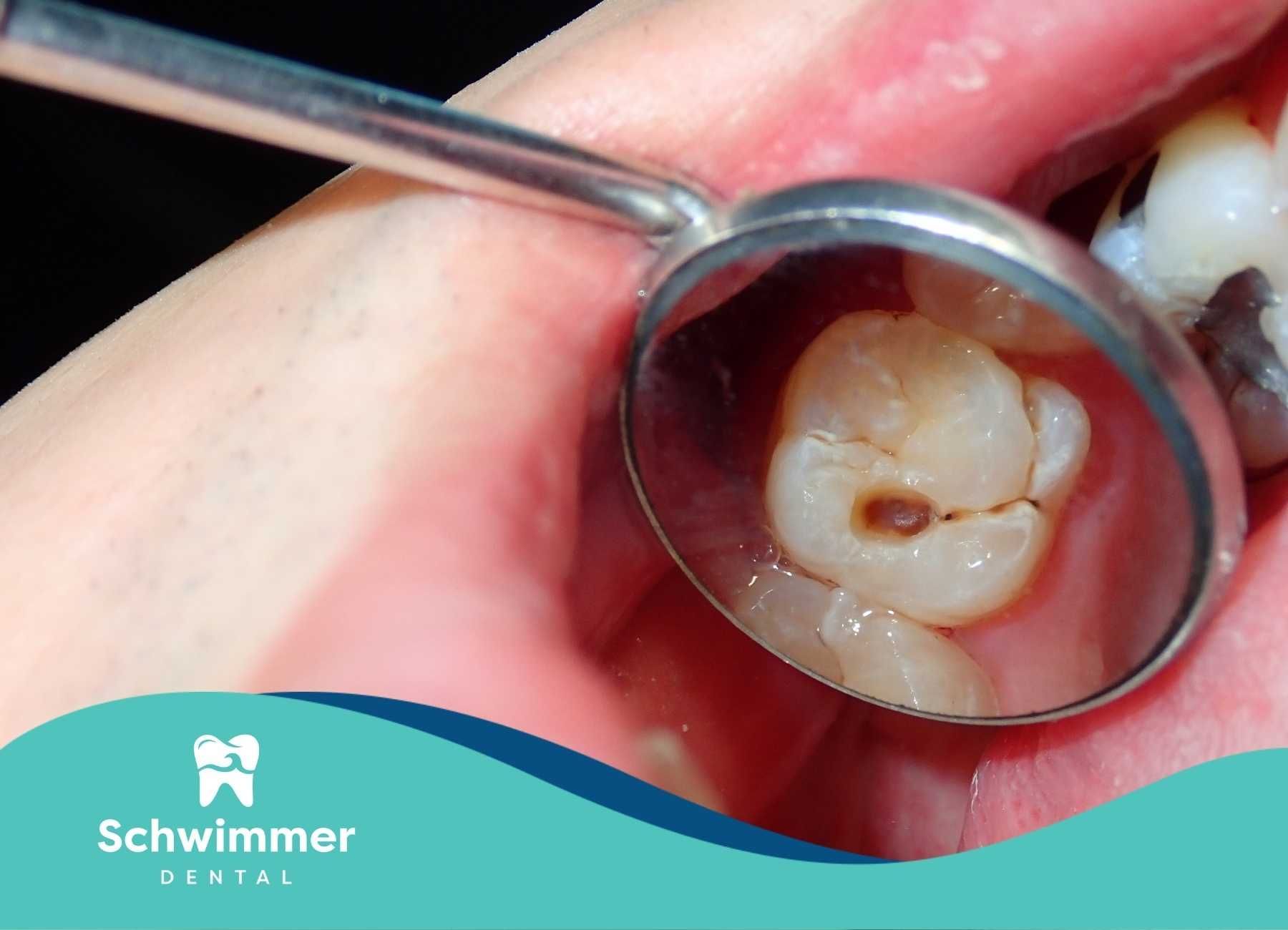How Does Invisalign Work? Your Guide to Clear Aligners
Key Highlights
Here are the key takeaways about how Invisalign works:
- Invisalign aligners are a modern orthodontic solution that straightens teeth without the use of metal.
- Unlike traditional braces, these clear aligners are removable, comfortable, and virtually invisible.
- The treatment works by using a series of custom-made aligners to apply gentle pressure, promoting gradual tooth movement.
- A personalized treatment plan is created using advanced 3D scanning technology to map out your journey to a new smile.
- Consistent wear of about 20-22 hours a day is essential for effective results.
Introduction
Are you dreaming of a straighter smile but hesitant about the look of traditional braces? You’re not alone. Invisalign aligners have revolutionized orthodontic treatment by offering a discreet and convenient way to achieve your goals. This innovative system uses a series of clear, custom-fit trays to gradually shift your teeth into their proper place.
This guide will walk you through exactly how Invisalign works, from the science behind it to the step-by-step process, so you can decide if it's the right path to your new smile.
Understanding Invisalign and Clear Aligners
Invisalign is a modern approach to orthodontic treatment that uses a series of custom-made clear aligners to straighten your teeth. These invisible aligners are created from a smooth, comfortable plastic material that fits snugly over your teeth, making them a discreet alternative to metal braces.
The primary goal of Invisalign aligners is to gradually move your teeth into their desired positions without drawing unwanted attention. Because they are virtually invisible, you can continue to smile with confidence throughout your treatment. Let's explore what these aligners are made of and how they compare to older methods.
What Are Invisalign Aligners Made Of?
Have you ever wondered what makes Invisalign so effective and comfortable? The secret lies in the specialized material used to create the aligner trays. Invisalign aligners are made from a patented thermoplastic called SmartTrack material. This material was developed after extensive research and testing to find the perfect combination of flexibility and durability.
The use of SmartTrack material is a key part of the advanced technology behind Invisalign. It allows the aligners to apply gentle, consistent force to your teeth, moving them more predictably and comfortably than other plastics might. This makes the custom aligners highly effective at achieving the desired tooth movements outlined in your treatment plan.
Because of this unique material, Invisalign offers a comfortable alternative to the often sharp and irritating metal of traditional braces. The smooth plastic fits snugly over your teeth, reducing irritation to your cheeks and gums while discreetly working to perfect your smile.
How Are Invisalign Aligners Different From Traditional Braces?
When considering teeth straightening, it's helpful to understand the key differences between Invisalign and traditional braces. While both aim to improve your smile, their approach and user experience are vastly different. Traditional braces rely on metal brackets glued to your teeth and connected by metal wires to pull teeth into place.
In contrast, invisible aligners use a series of custom trays to gently push teeth into their new positions. This fundamental difference leads to distinct advantages that make Invisalign a preferred choice for many.
Here are some of the main contrasts:
- Appearance: Invisalign aligners are clear and virtually invisible, while metal braces are highly noticeable.
- Comfort: The smooth plastic of Invisalign is more comfortable than the sharp metal brackets and wires of braces.
- Convenience: Aligners are removable for eating and cleaning, unlike braces, which are fixed in place.
- Maintenance: Oral hygiene is much easier with Invisalign since you can brush and floss normally.
The Advantages of Clear Aligner Technology
Clear aligner technology has become a popular choice for orthodontic treatment due to its numerous benefits. The system is designed with your comfort and lifestyle in mind, offering a more flexible approach to straightening teeth. Clear aligners work by applying gentle pressure to guide your teeth into their desired position over time.
One of the biggest advantages is that they are removable aligners. You can take them out to eat your favorite foods, brush, and floss, which makes maintaining good oral hygiene much easier than with fixed braces. This flexibility helps you continue your daily life with minimal disruption.
Here’s why so many people are choosing this technology:
- Discreet Appearance: The aligners are nearly invisible, so you can straighten your teeth without feeling self-conscious.
- Enhanced Comfort: The smooth material avoids the irritation often caused by metal brackets and wires.
- Predictable Results: Advanced 3D imaging allows you to see your final results before you even begin treatment.
The Science Behind How Invisalign Works
The effectiveness of Invisalign is rooted in a fascinating biological process. The science behind how the aligners work involves applying a gentle force to your teeth to stimulate a natural response in your jawbone. This process is known as bone remodeling.
When the aligners apply consistent pressure, your body responds by breaking down bone on one side of the tooth and building new bone on the other. This allows the tooth to gradually move into its new position. This controlled tooth movement is what makes Invisalign so effective. The following sections will explain this science in greater detail.
How Tooth Movement Happens with Aligners
The magic of Invisalign lies in its ability to harness your body's natural processes to achieve tooth movement. Your teeth are not fixed directly into your jawbone; instead, they are held in place by the periodontal ligament. This ligament acts as a cushion and allows for slight movement.
When you wear your aligners, they apply gentle pressure to specific teeth. This pressure signals your body to initiate bone remodeling. On the side of the tooth where pressure is applied, specialized cells called osteoclasts break down bone tissue. Simultaneously, on the opposite side, cells called osteoblasts build new bone tissue.
This coordinated process of breaking down and rebuilding bone is what allows your teeth to slowly and safely shift into their desired position. Each new set of aligners continues this process, guiding your teeth step by step toward their final alignment according to your personalized treatment plan.
SmartTrack Material and Precision Engineering
The precision of Invisalign treatment is largely thanks to its exclusive SmartTrack material. This advanced technology was specifically engineered for orthodontics, providing a more comfortable and predictable way to move teeth. The material is highly elastic, allowing it to fit snugly around your teeth and apply a consistent, gentle force.
This controlled pressure is key to an effective treatment. Unlike generic plastics, SmartTrack material is designed to guide teeth with greater accuracy, helping you stay on track with your treatment plan. The flexibility of the material also makes the aligners easier to put on and take off while ensuring they remain comfortable for all-day wear.
Ultimately, the combination of this unique material and precision engineering helps ensure optimal results. By delivering a more constant force, the aligners can produce the exact movements needed to achieve your perfect smile efficiently and with minimal discomfort.
Digital Scanning and 3D Treatment Planning
The journey to a straighter smile with Invisalign begins with cutting-edge digital technology. Instead of messy physical impressions, your dentist will use a 3D scanner to take a precise scan of your teeth. This scan creates a highly accurate digital model of your mouth, which serves as the foundation for your entire treatment.
Using this digital model, your dentist can map out a personalized treatment plan from start to finish. The software allows them to visualize how your teeth will move with each set of aligners and even show you a preview of your final smile. This level of detail ensures your treatment is tailored specifically to your needs.
This digital approach allows for a highly customized and predictable process. Here’s a quick look at how the digital planning works:
| Step | Action |
|---|---|
| 1. Digital Scan | A 3D scan of your teeth creates an accurate digital model. |
| 2. Treatment Simulation | Software maps out the entire tooth movement sequence. |
| 3. Aligner Creation | A series of custom aligners are 3D-printed based on the plan. |
| 4. Progress Monitoring | Your dentist tracks your progress against the digital plan. |
The Invisalign Treatment Process Step by Step
The Invisalign treatment process is a straightforward and well-structured journey to achieving the smile you've always wanted. It all starts with an initial consultation and ends with you showing off your beautifully aligned teeth. The core of the treatment involves wearing a series of aligners that are custom-made for you.
Each aligner is worn for one to two weeks before you switch to the new set of aligners in your sequence. This gradual change is what moves your teeth into their final positions. Ready to learn more about what to expect? Let's break down each step, from your first appointment to your final reveal. Schedule a consultation today to get started.
Starting Invisalign: Initial Consultation and Assessment
Your Invisalign journey begins with an initial consultation with a certified provider. During this first appointment, your dentist will discuss your smile goals and evaluate your overall dental health to determine if you are a good candidate for the treatment. This is the perfect time to ask any questions you have about the process.
A key part of this assessment involves taking a 3D scan of your teeth. This quick and comfortable process uses advanced imaging technology to create a precise digital model of your mouth. This model allows your dentist to see your teeth from every angle and plan the necessary adjustments needed to achieve your new smile.
Based on this evaluation, your dentist will confirm if Invisalign is the right choice for you. They will walk you through the expected timeline and what you can anticipate from the treatment. This first step is all about gathering information and creating a solid foundation for your transformation.
Creating Your Customized Plan and Aligner Sets
Once your digital scans are complete, your dentist will use specialized software to create your personalized treatment plan. This plan maps out the precise movements your teeth need to make and the order in which they will happen. You can even see a virtual representation of how your smile will look at the end of the treatment.
Based on this unique plan, a full set of aligners will be custom-made just for you. Each of these custom aligners is designed to make a specific adjustment, gently guiding your teeth toward their final positions. You will receive several sets at a time, each clearly marked so you know which one to wear next.
This highly personalized treatment plan is engineered to deliver optimal results. By following the predetermined sequence of aligners, you can be confident that your treatment is progressing efficiently and effectively, bringing you one step closer to the smile you desire.
Tracking Progress: Routine Checkups and Tray Changes
To ensure your treatment stays on track, you will have routine checkups with your dentist every six to eight weeks. During these appointments, your provider will monitor your progress, make sure your teeth are moving as planned, and answer any questions you may have. These visits are a crucial part of the process.
You will typically switch to a new set of aligners every one to two weeks, as directed by your dentist. Each time you put in new trays, you’ll be advancing your treatment to the next stage. It’s important to follow this schedule closely to keep your tooth movement on track.
For the best results, consistent wear is essential. You should wear your aligners for 20 to 22 hours per day, only removing them to eat, drink, brush, and floss. Adhering to this guideline is one of the most important things you can do to ensure your treatment is successful and completed on time.
Pros and Cons of Using Invisalign Aligners
Like any orthodontic treatment, Invisalign aligners come with their own set of advantages and potential drawbacks. The benefits, such as their discreet appearance and convenience, make them an attractive option for achieving a confident smile. Being removable aligners, they offer a level of freedom that traditional metal braces can't match.
However, it's also important to consider the limitations. Invisalign may not be the ideal solution for every case, and the treatment requires a high level of patient commitment. Understanding both sides will help you make an informed decision on your journey to a straighter smile.
Benefits: Comfort, Appearance, and Convenience
One of the greatest benefits of Invisalign is the superior comfort it offers. The aligners are made from a smooth plastic material that won't irritate the inside of your mouth like metal brackets and wires can. This focus on comfort makes it easier to wear them for the recommended 20-22 hours a day.
The nearly invisible appearance of the aligners is another major plus. You can straighten your teeth without feeling self-conscious, allowing you to smile confidently throughout your treatment. This convenience extends to your daily life, as the aligners are removable. You can take them out to enjoy all your favorite foods without restriction.
Here’s a summary of the key benefits:
- Discreet Look: The clear aligners are barely noticeable.
- No Food Restrictions: You can eat whatever you want by simply removing the aligners.
- Better Oral Hygiene: Brushing and flossing are easy since there are no wires or brackets to navigate around.
- Comfortable Fit: The smooth plastic material is gentle on your cheeks and gums.
Potential Limitations Compared to Braces
While Invisalign is a highly effective treatment for many, it does have some limitations. For certain severe cases of misalignment, traditional metal braces may be a more suitable option. Complex cases that involve significant rotations, large gaps, or severe bite issues might require the greater force and control that braces provide.
For example, correcting major bite issues, such as a severe overbite or underbite, may be more efficiently handled with braces. Your orthodontist can assess the complexity of your situation and recommend the most effective treatment for your specific needs.
Here are a few situations where braces might be preferred:
- Severe Crowding: When teeth are extremely crowded, braces may be needed to create enough space.
- Jaw Alignment: Significant jaw discrepancies often respond better to treatment with braces.
- Tooth Shape: Teeth that are pegged or very round can be difficult for aligners to grip.
- Complex Movements: Intrusions or extrusions (moving teeth up or down) can be more challenging with aligners alone.
Common Experiences with Discomfort or Adjustment
It's common to wonder if Invisalign treatment is painful. While it's generally considered more comfortable than braces, you may experience some minor discomfort, especially when you first start wearing a new set of aligners. This feeling is typically described as a sense of pressure on your teeth.
This gentle pressure is a good sign—it means your aligners are working to move your teeth. The discomfort is usually temporary and subsides within a few days as your teeth get used to the new aligners. This adjustment period is a normal part of the treatment process.
Most patients find any discomfort to be mild and manageable. Sticking to a consistent wear schedule helps your teeth adapt more quickly. Maintaining good oral health by brushing after meals and before reinserting your aligners will also ensure a comfortable and healthy treatment experience.
Conclusion
In conclusion, Invisalign offers a modern, discreet, and effective way to straighten teeth without the discomfort and visibility of traditional braces. By using advanced technology like SmartTrack material and digital scanning, Invisalign provides a personalized treatment plan tailored to your unique dental needs.
While it has its pros and cons, the comfort and convenience of clear aligners make it an appealing choice for many. If you're ready to take the next step towards a confident smile, get in touch with Schwimmer Dental for a consultation to explore how Invisalign can work for you! Call us now!
Frequently Asked Questions
How often do you change your Invisalign aligners during treatment?
You will typically switch to a new set of aligners every one to two weeks, as outlined in your personalized treatment plan. Consistent wear of your new trays is crucial for keeping your progress on track and achieving optimal results. Your dentist will provide you with a schedule to follow.
What types of orthodontic cases can Invisalign treat?
Clear aligners are a versatile orthodontic treatment that can correct a wide range of issues, including gapped teeth, overcrowding, and some bite issues like overbites and underbites. While Invisalign is very effective, some highly complex cases may still require traditional braces for the best outcome.
How long does Invisalign take to straighten teeth?
The average treatment process with Invisalign is between 6 and 18 months, though some minor cases can be faster. The exact duration depends on the complexity of your case and how consistently you wear your aligners. Following your plan is key to moving your teeth to their desired position and achieving a straighter smile.
Sources:
- https://www.invisalign.com/how-it-works



